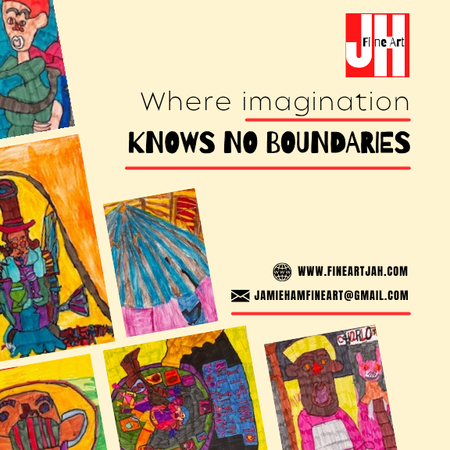A Beginner's Guide to Watercolor and Pastel Techniques: Finding Your Fearless Voice
- Ailie Inc
- Sep 28
- 3 min read
Creativity takes courage! Every time you pick up a brush or pastel stick, you're taking a beautiful risk. You're choosing to be vulnerable and brave at the same time. Starting with watercolors and pastels can feel scary, but these amazing mediums are perfect for beginners who want to explore fearless art and authentic expression.

Why Watercolors and Pastels Are Perfect for Beginners
Both watercolors and pastels are forgiving mediums that let you experiment without pressure. They encourage you to embrace happy accidents and turn mistakes into masterpieces. These art forms teach you to let go of control and trust your creative instincts - which is exactly what authentic expression is all about.
Watercolors flow and blend in unexpected ways, while pastels let you layer colors and create soft, dreamy effects. Both mediums help you discover your unique artistic voice without the stress of getting everything "perfect."
Getting Started with Watercolor Techniques
Basic Watercolor Supplies You Need
You don't need expensive supplies to start your watercolor journey. Here's what beginners should have:
Student-grade watercolor paints (tubes or pans work fine)
Watercolor paper (140lb weight is good for learning)
Round brushes in sizes 6, 10, and 14
Two water containers (one for cleaning, one for fresh water)
Paper towels or sponges
Masking tape
Essential Watercolor Techniques for Beginners
Wet-on-Wet Technique: Paint on wet paper or wet paint. This creates soft, flowing effects that blend naturally. It's perfect for skies, water, or abstract backgrounds. Don't worry if colors run together - that's the magic!
Wet-on-Dry Technique: Paint on completely dry paper. This gives you more control and creates crisp edges. Use this for details or when you want clean, defined shapes.
Gradient Washes: Start with a strong color and add water as you paint across the paper. This creates smooth color transitions that look professional even when you're just starting.
Salt Technique: While your paint is still wet, sprinkle table salt on it. As it dries, the salt creates interesting textures that look like stars or snowflakes.
Mastering Pastel Techniques
What Pastels Should Beginners Buy
Soft pastels are easier for beginners than oil pastels. Start with:
A basic set of 24-36 soft pastels
Textured pastel paper (gray or tan colored works well)
Blending stumps or your fingers
A kneaded eraser
Fixative spray to protect finished work
Key Pastel Techniques to Try
Layering Colors: Build up colors slowly by layering light strokes. Start with lighter colors and add darker ones on top. This creates rich, vibrant effects.
Blending: Use your finger, blending stump, or tissue to smooth colors together. This creates soft gradations and dreamy backgrounds.
Cross-Hatching: Make overlapping lines in different directions. This technique adds texture and depth to your artwork.
Scumbling: Make small circular motions with your pastel stick. This creates interesting textures perfect for clouds, grass, or fabric.
Combining Courage with Creativity
Remember, every mark you make is an act of courage. When you're learning watercolor and pastel techniques, don't focus on making "good" art - focus on making authentic art that comes from your heart.
Try these brave exercises:
Paint or draw for 15 minutes without lifting your tool from the paper
Use colors that make you happy, even if they don't match "real life"
Create abstract pieces that show how you feel instead of what you see
Combine watercolors and pastels in the same piece (yes, you can do this!)
Embracing Happy Accidents
Both watercolors and pastels will surprise you. Paint will drip where you don't expect it. Pastels will smudge in interesting ways. These aren't mistakes - they're opportunities for authentic expression and creative discovery.
When something unexpected happens, ask yourself: "How can I work with this instead of against it?" Often, these surprises lead to your most fearless and beautiful art.
Building Your Artistic Confidence
Start small and be kind to yourself. Create simple studies of everyday objects - a coffee cup, a flower, or even just color swatches. Each practice session builds your skills and confidence.
Join online communities where you can share your work and connect with other artists. The outsider art and NFT art communities are especially welcoming to beginners who are finding their authentic voice.
Your Creative Journey Matters
Every piece of art you create is proof of your courage to express yourself authentically. Whether you're painting peaceful landscapes in watercolor or creating bold abstract pieces with pastels, you're taking risks that matter.
Your artistic journey is unique, and these techniques are just tools to help you tell your story. Trust the process, embrace the vulnerability, and let your fearless creativity shine through every brushstroke and pastel mark.
Connect with Fellow Fearless Artists
Ready to share your creative courage with others who understand the beautiful risk of authentic expression?
Contact Information:
Website: https://www.fineartjah.com/
Facebook: https://www.facebook.com/fineartjh
Instagram: https://www.instagram.com/jamiehamfineart
%20copy%202.png)







Comments